Wildlife Wednesday: Stinging Caterpillars
Autumn is time for all kinds of natural phenomena in the Houston area: bird and butterfly migration, many trees and bushes bear fruit, and leaves change color. The one common fall occurrence that most people could do without, however, is the emergence of stinging moth caterpillars. The stings of these larvae can range from mild annoyance to extreme pain, with some other mild health effects.
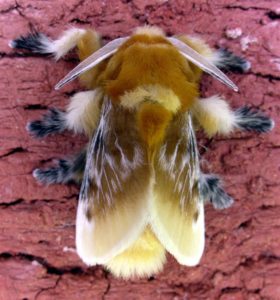
Caterpillars have a few ways to protect themselves. Swallowtail butterfly caterpillars have foul smelling horn like osmeteria which they use to dab nasty chemicals on potential predators. Some caterpillars can jump and wriggle wildly to escape predators. Some caterpillars have copious hairs and spines that are hard for predators to swallow. The caterpillars of some moths and butterflies have urticating hairs and spines (spines and hairs connected at the base to sacs of venom kept under the skin), that can deliver painful stings. We take a look at a few of these locally found stinging moth caterpillars today.
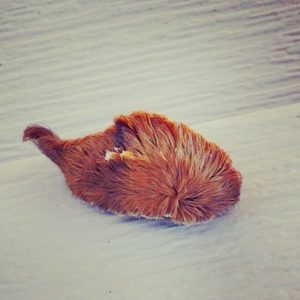 The most infamous of our stinging caterpillars is the Asp or the caterpillar of the Southern Flannel Moth (Megalopyge opercularis, pictured right). Asps usually emerge from their eggs in mid to late Autumn, and are commonly found in or near hardwood trees, shrubs, and vines. They feed on the leaves of these plants, and wander around constantly, looking for food, and eventually for decent locations to make their cocoons. They may be various shades of brown and gray, with a fur ridge down the middle of the back.
The most infamous of our stinging caterpillars is the Asp or the caterpillar of the Southern Flannel Moth (Megalopyge opercularis, pictured right). Asps usually emerge from their eggs in mid to late Autumn, and are commonly found in or near hardwood trees, shrubs, and vines. They feed on the leaves of these plants, and wander around constantly, looking for food, and eventually for decent locations to make their cocoons. They may be various shades of brown and gray, with a fur ridge down the middle of the back. 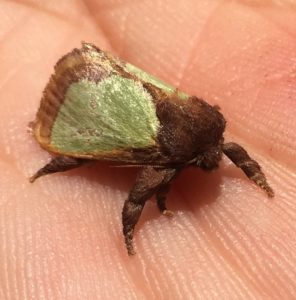
The infamy of these furry little larvae lie in their incredibly painful sting. Hidden in the fur ridge on their backs is a line of sharp little venomous spines. Stings from these spines may cause severe pain, nausea, light-headedness, swelling and redness of the sting site, burning sensation, and shortness of breath.
Of course, if you experience an extreme of any of these symptoms, or several of them for an extended period, you should see a medical professional for treatment. Home treatment includes removing the spines from the skin with scotch tape and topical treatment (with calamine lotion, baking soda, anti-histamine or pain relief lotions). Similar methods are recommended for other caterpillar stings, as well.
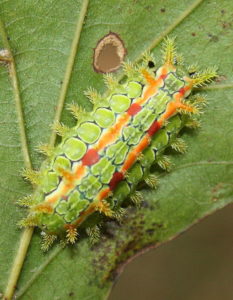 The Spiny Oak Slug (Euclea delphinii) is the caterpillar of an adorable furry little green and brown cup moth (pictured above right). While the caterpillar is really quite beautiful with its intricate designs of yellow and green or brown and orange, the pain from the stings is not at all adorable. These small spiny larvae (growing to only 2 cm long) feed on a wide variety of leaves from deciduous trees, bushes, and vines. In the South, they have 2 generations, one in the Summer, and another active in Fall.
The Spiny Oak Slug (Euclea delphinii) is the caterpillar of an adorable furry little green and brown cup moth (pictured above right). While the caterpillar is really quite beautiful with its intricate designs of yellow and green or brown and orange, the pain from the stings is not at all adorable. These small spiny larvae (growing to only 2 cm long) feed on a wide variety of leaves from deciduous trees, bushes, and vines. In the South, they have 2 generations, one in the Summer, and another active in Fall.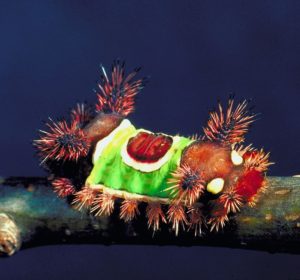
The Saddle Back Caterpillar (Acharia stimulea) is the larva of another small and furry shiny brown cup moth (down and right) with bunches of sharp rigid stinging spines, found in bunches at the front and back and along the sides of the caterpillar’s body. This is another caterpillar with an extremely painful sting, that may cause other aforementioned symptoms. As with the other two species, they feed and are found around a wide variety of deciduous hardwood tree, bushes, and vines. They may reach a length of up to 4 cm.
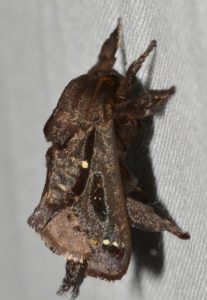 Well, we hope this little mini-guide to stinging Fall caterpillars helps you stay safe out in your yard, garden, and out in area parks in the coming weeks. Though painful at times, they are important herbivores in our native ecosystems, and they really can be quite beautiful and even endearing.
Well, we hope this little mini-guide to stinging Fall caterpillars helps you stay safe out in your yard, garden, and out in area parks in the coming weeks. Though painful at times, they are important herbivores in our native ecosystems, and they really can be quite beautiful and even endearing.
Thanks for joining us again, and see you soon!
Eric Duran
Staff Naturalist
Photographs: Top Asp – Rain0975 | Flickr; Flannel Moth – Patrick Coin | Wikimedia; Asp – Amizrachi | Wiki; Slug moth – Eric Duran; Oak Slug Caterpillar – Shaina Noggle | Wikimedia; Saddleback Caterpillar – Gerald Lenhard/LSU | Wiki; Saddle back moth – Andy Reaggo and Chrissy McClarren | Flickr


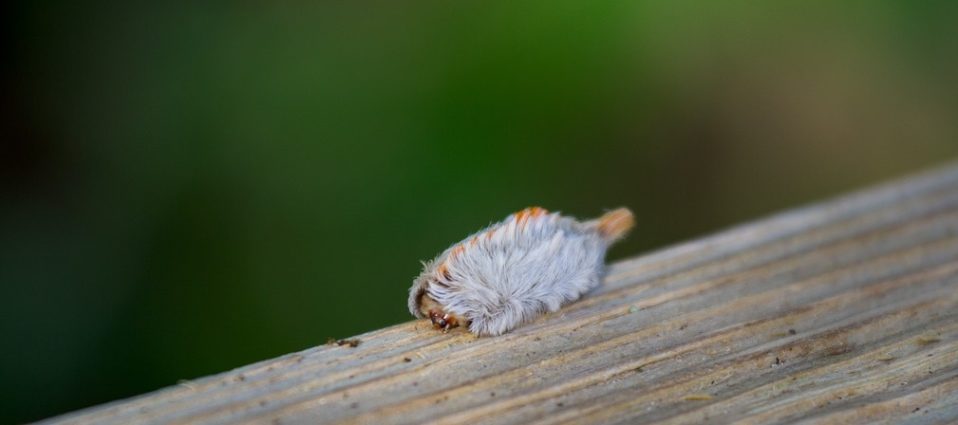
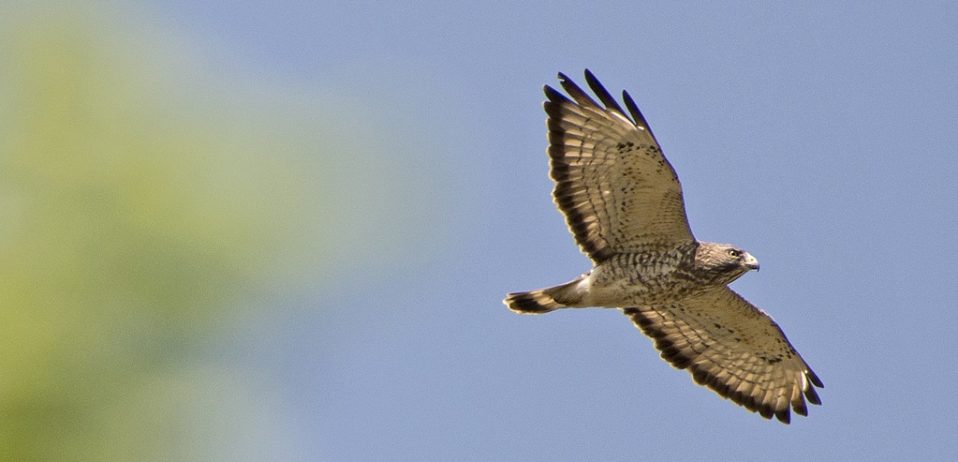
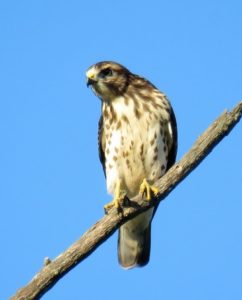
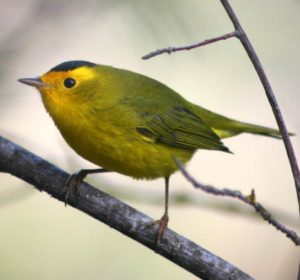

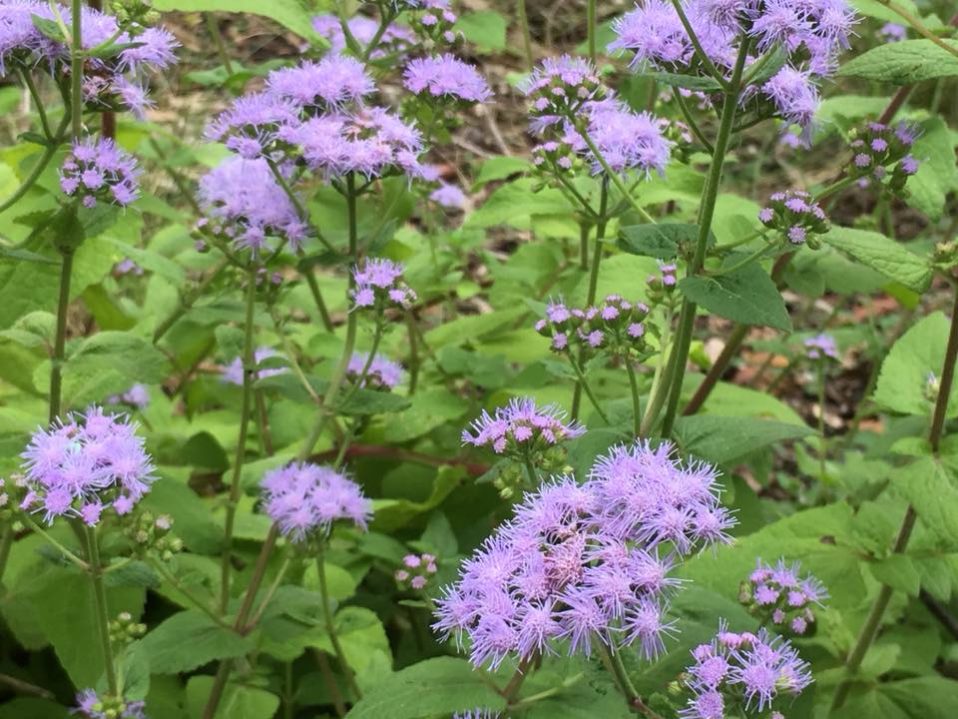
 People don’t usually think of beetles as pollinators, but we’ve recently found Spotted Cucumber Beetles (
People don’t usually think of beetles as pollinators, but we’ve recently found Spotted Cucumber Beetles (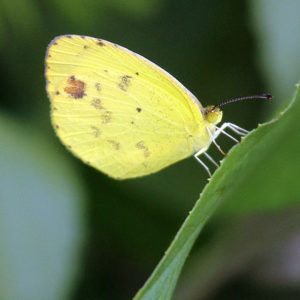
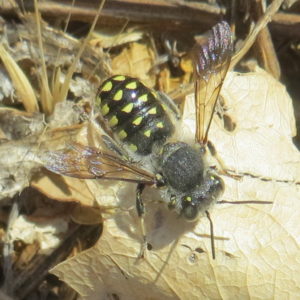 Wool Carder Bees (Anthidium maculosum) are solitary bees, and are just a bit shorter than honeybees, but thicker-bodied. Unlike honeybees, the males males are larger than the females and territorial, and they survive after mating. The females mate with various different males, and establish a nest to lay eggs and raise young by themselves. They are referred to as “carder bees”, because of their habit of gathering plant hairs and fibers to construct their nests.
Wool Carder Bees (Anthidium maculosum) are solitary bees, and are just a bit shorter than honeybees, but thicker-bodied. Unlike honeybees, the males males are larger than the females and territorial, and they survive after mating. The females mate with various different males, and establish a nest to lay eggs and raise young by themselves. They are referred to as “carder bees”, because of their habit of gathering plant hairs and fibers to construct their nests.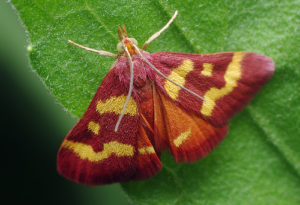
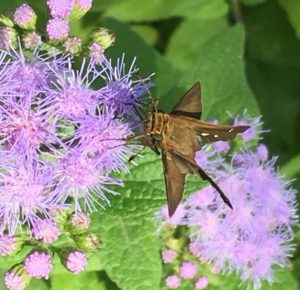 Well, we hope you enjoyed our mini review of some of the insects that have been visiting our Mistflower, here at the Nature Discovery Center. Also, we hope you will consider this beautiful and robust plant for your own home garden, both as decoration and food for wild pollinators.
Well, we hope you enjoyed our mini review of some of the insects that have been visiting our Mistflower, here at the Nature Discovery Center. Also, we hope you will consider this beautiful and robust plant for your own home garden, both as decoration and food for wild pollinators.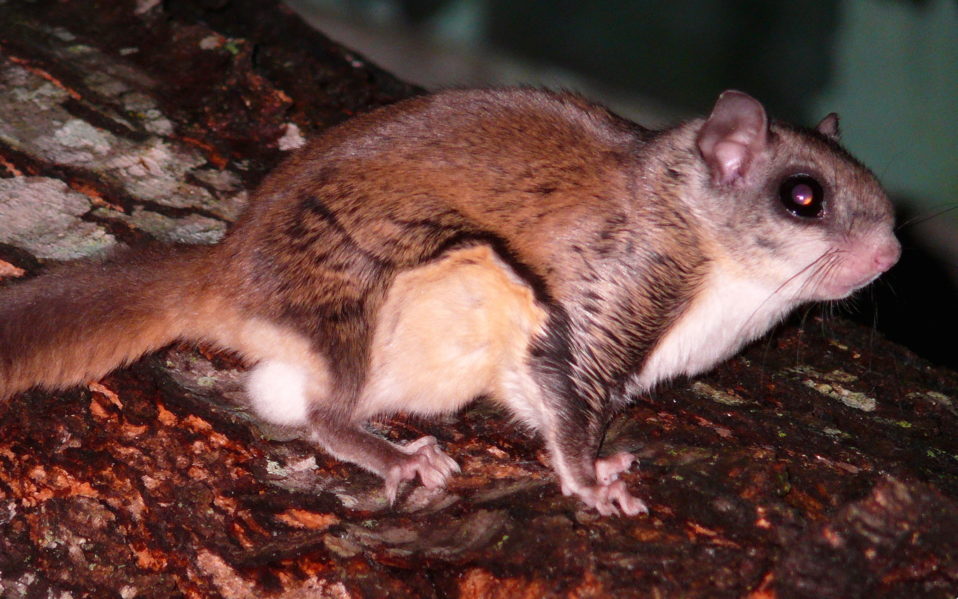
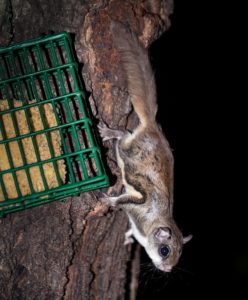 Southern Flying Squirrels (Glaucomys volans) usually pass underneath our radar, as the only nocturnal tree squirrel in our area. That’s right, a nocturnal squirrel! Flying squirrels don’t actually fly, the way that bats, birds, and insects can, but rather they glide using skin flaps between the front and back legs. They are incredibly adept at controlling the direction of their glide by adjusting these flaps. Each flap is called a patagium. Like other tree squirrels, flying squirrels eat mainly seeds and nuts, and supplement their diet with insects and small vertebrates occasionally. they nest or shelter in tree holes, like old woodpecker nests and natural hollows formed from the scars of fallen branches. They’re our smallest squirrels, with a body length of only about 5 inches.
Southern Flying Squirrels (Glaucomys volans) usually pass underneath our radar, as the only nocturnal tree squirrel in our area. That’s right, a nocturnal squirrel! Flying squirrels don’t actually fly, the way that bats, birds, and insects can, but rather they glide using skin flaps between the front and back legs. They are incredibly adept at controlling the direction of their glide by adjusting these flaps. Each flap is called a patagium. Like other tree squirrels, flying squirrels eat mainly seeds and nuts, and supplement their diet with insects and small vertebrates occasionally. they nest or shelter in tree holes, like old woodpecker nests and natural hollows formed from the scars of fallen branches. They’re our smallest squirrels, with a body length of only about 5 inches.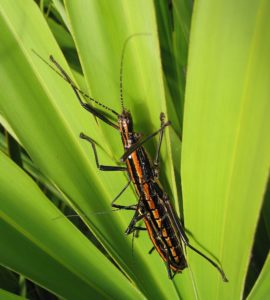
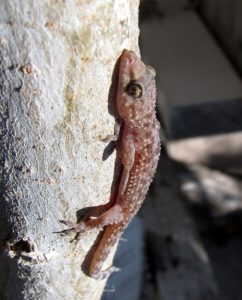 Mediterranean Geckos (Hemidactylus turcicus), as the name would suggest, are not from around here, but rather are originally from the Mediterranean coastal region of North Africa. Through shipping and international trade, they have been spread from there to coastal areas around the world. They have an especially vibrant population in the Houston-Galveston area of Texas, but can be found in larger cities around the state, like San Antonio, Austin, and Dallas, as well. They are our only nocturnal lizard. As with most geckos, they climb exceptionally well, and feed on insects and other invertebrates.
Mediterranean Geckos (Hemidactylus turcicus), as the name would suggest, are not from around here, but rather are originally from the Mediterranean coastal region of North Africa. Through shipping and international trade, they have been spread from there to coastal areas around the world. They have an especially vibrant population in the Houston-Galveston area of Texas, but can be found in larger cities around the state, like San Antonio, Austin, and Dallas, as well. They are our only nocturnal lizard. As with most geckos, they climb exceptionally well, and feed on insects and other invertebrates.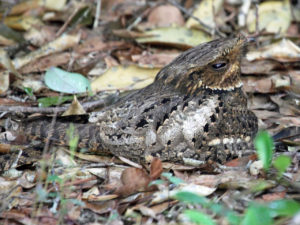
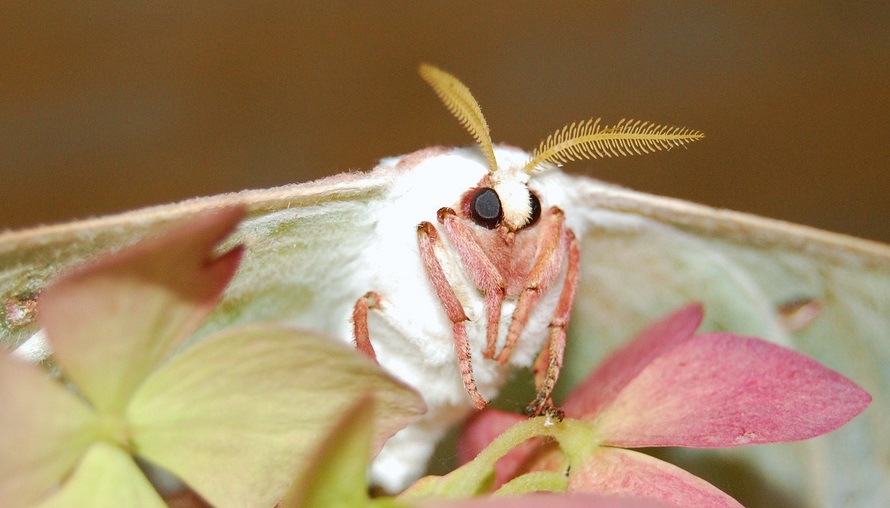
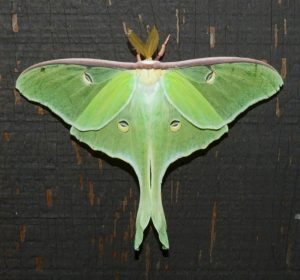 The Luna Moth (Actias luna) is a large nocturnal green moth in the silk moth family Saturniidae. As with most moths in this family, they do not have mouth parts, and thus do not feed as adults, having received all the nutrients they need to carry out their lives, as larvae (caterpillars). This is indeed a large moth, with a wingspan of up to 4.5 inches across. They have long tails on the hind-wings, which give them a swallowtail like appearance. The plump green caterpillars, with small soft spikes and red bumps, feed on a wide variety of tree leaves. They spin a silken cocoon in leaves, where they turn into pupae, and later emerge from, Spring through Summer in the Southern U.S.
The Luna Moth (Actias luna) is a large nocturnal green moth in the silk moth family Saturniidae. As with most moths in this family, they do not have mouth parts, and thus do not feed as adults, having received all the nutrients they need to carry out their lives, as larvae (caterpillars). This is indeed a large moth, with a wingspan of up to 4.5 inches across. They have long tails on the hind-wings, which give them a swallowtail like appearance. The plump green caterpillars, with small soft spikes and red bumps, feed on a wide variety of tree leaves. They spin a silken cocoon in leaves, where they turn into pupae, and later emerge from, Spring through Summer in the Southern U.S.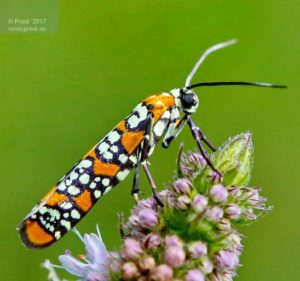
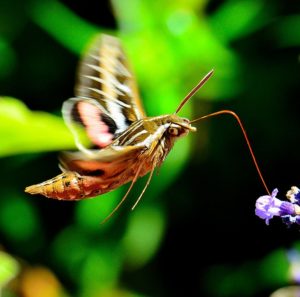
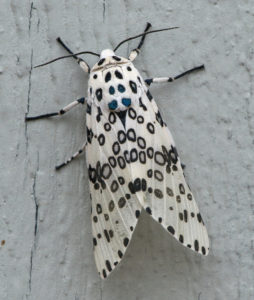

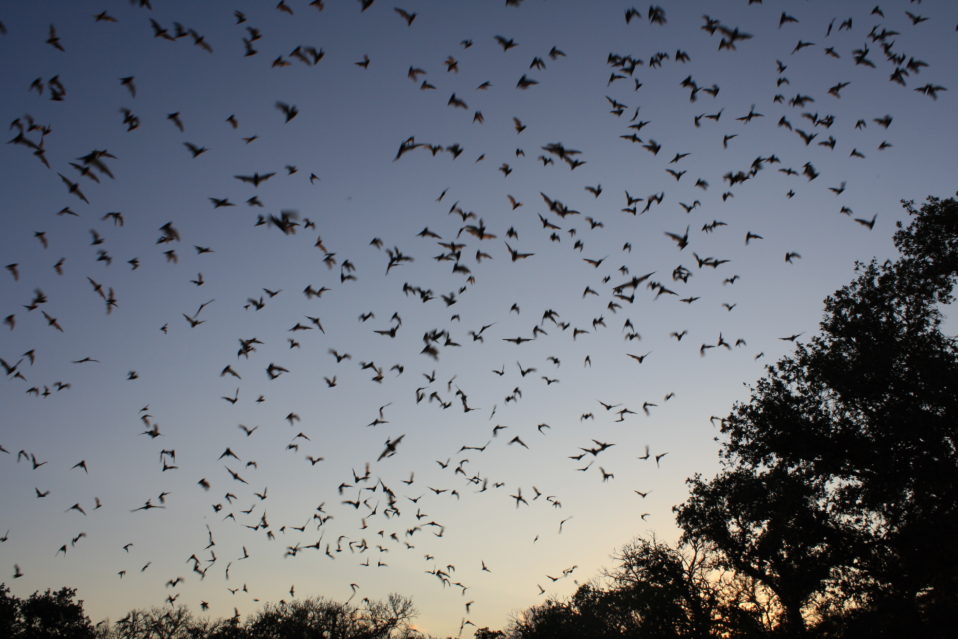
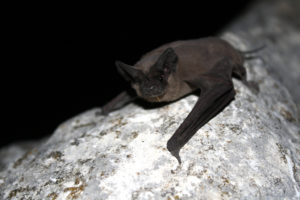
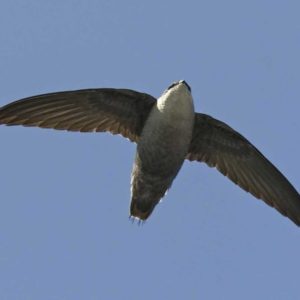

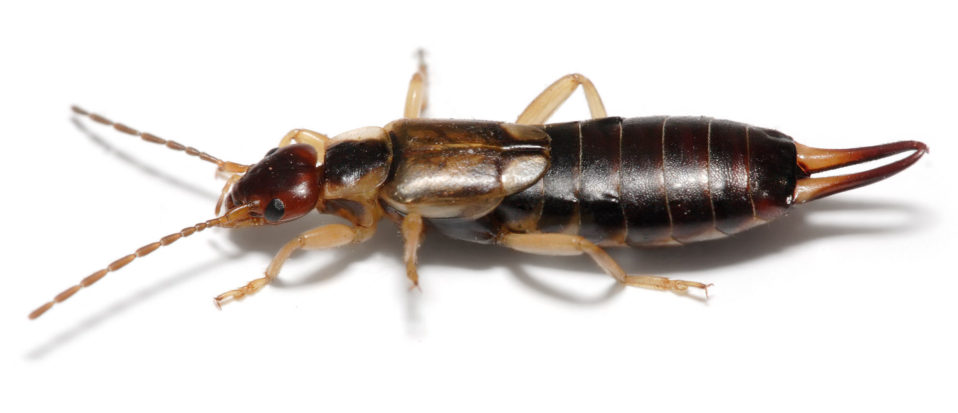
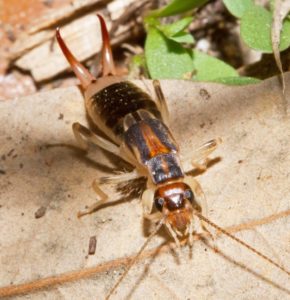 Earwigs (order Dermaptera) are very common little insects, but are somewhat misunderstood. The common name comes from an old and common belief that earwigs crawl into people’s ears… this is not the case! Earwigs live in a variety of natural settings, and occasionally wander into our houses. They are nocturnal and omnivorous (feeding on a wide variety of small invertebrates and plant matter). Because of the pincers on the tail end, they are often misidentified as centipedes, which are not insects, and have longer bodies and many more than 6 legs. The pincers are used to seize prey and defend themselves from each other and other small predators.
Earwigs (order Dermaptera) are very common little insects, but are somewhat misunderstood. The common name comes from an old and common belief that earwigs crawl into people’s ears… this is not the case! Earwigs live in a variety of natural settings, and occasionally wander into our houses. They are nocturnal and omnivorous (feeding on a wide variety of small invertebrates and plant matter). Because of the pincers on the tail end, they are often misidentified as centipedes, which are not insects, and have longer bodies and many more than 6 legs. The pincers are used to seize prey and defend themselves from each other and other small predators.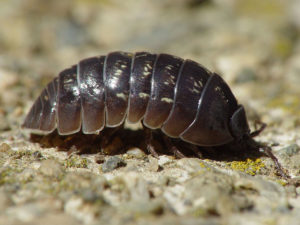
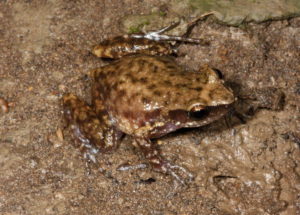
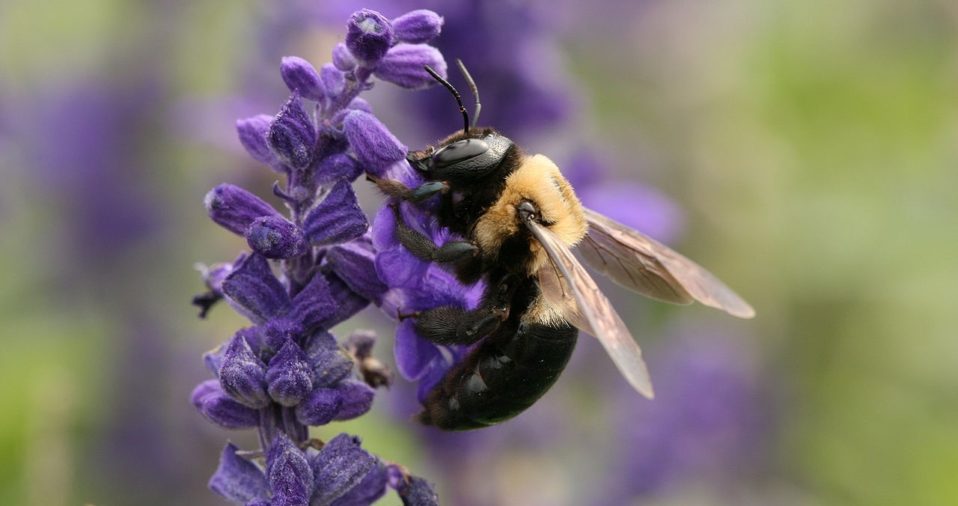
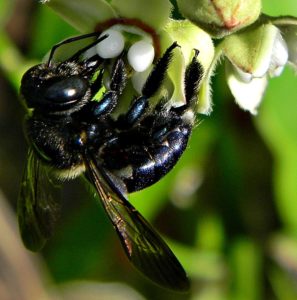
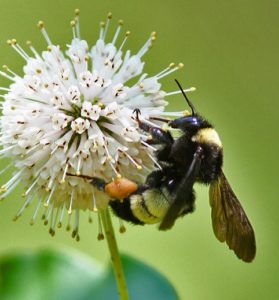
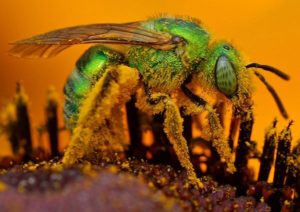
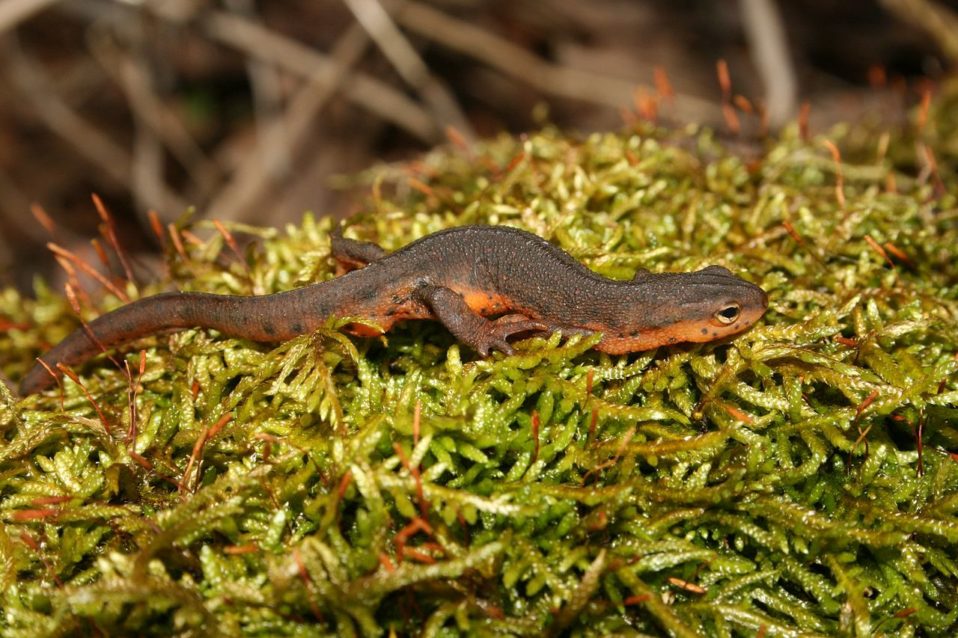
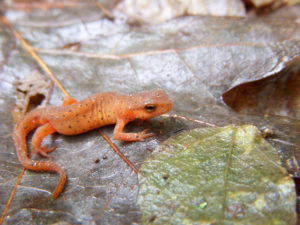
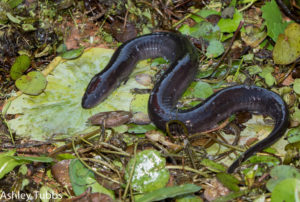
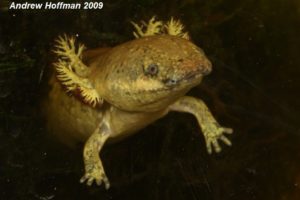 Another fully aquatic eel-like salamander is the Lesser Siren (Siren intermedia), which grow to about 18 inches in length. They have 2 tiny front legs, no back legs, and a flattened paddle-like tail. Sirens are easily identified by their feathery gray and red external gills, which extend from the sides of the head. Much like the amphiuma, they are very carnivorous and can deliver a painful and bloody bite. However, instead of a sharp bony ridge, they have a sharp horny beak-like structure. Also similar to amphiumas, they have extremely smooth slimy skin. Both sirens and amphiumas are believed to guard their eggs in mud nests under the water or in burrows next to their ponds, lakes, and bayous.
Another fully aquatic eel-like salamander is the Lesser Siren (Siren intermedia), which grow to about 18 inches in length. They have 2 tiny front legs, no back legs, and a flattened paddle-like tail. Sirens are easily identified by their feathery gray and red external gills, which extend from the sides of the head. Much like the amphiuma, they are very carnivorous and can deliver a painful and bloody bite. However, instead of a sharp bony ridge, they have a sharp horny beak-like structure. Also similar to amphiumas, they have extremely smooth slimy skin. Both sirens and amphiumas are believed to guard their eggs in mud nests under the water or in burrows next to their ponds, lakes, and bayous.
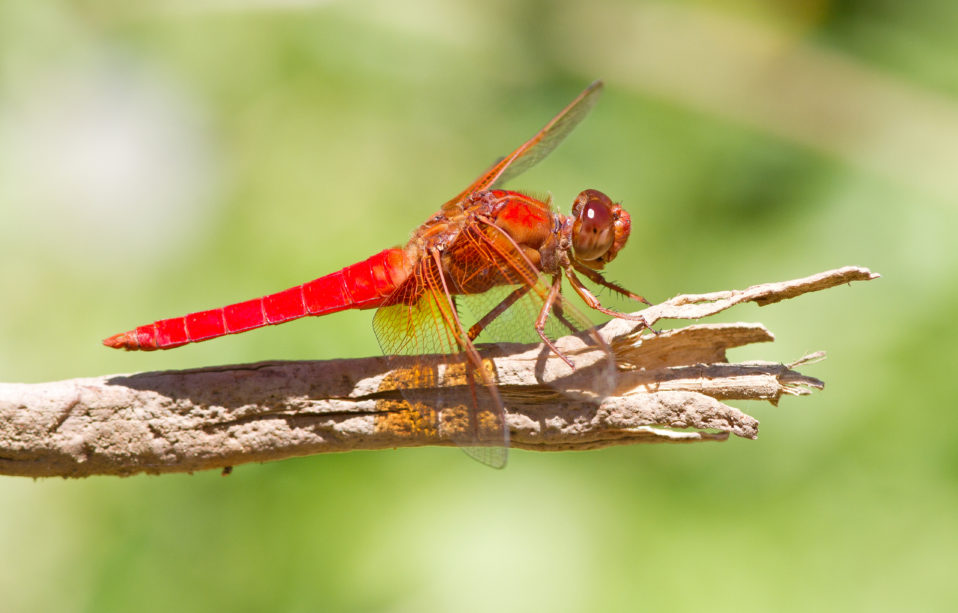
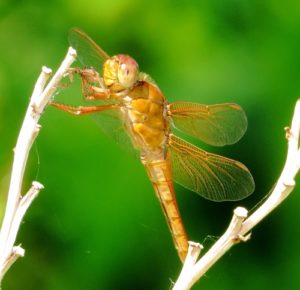 The
The 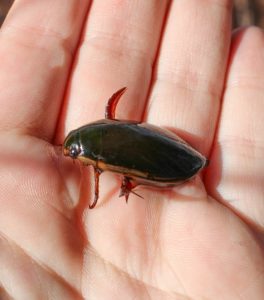
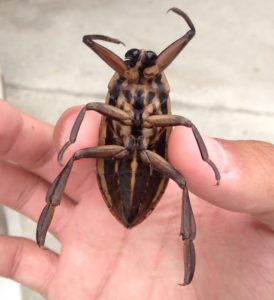 Sometimes called “Toe-biters”,
Sometimes called “Toe-biters”, 